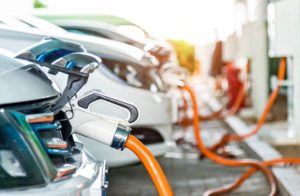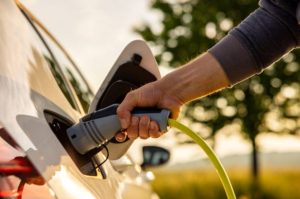The U.S. requires more electric vehicles (EV) infrastructure to meet legislative demands. Automobiles account for a fifth of the country’s greenhouse gas emissions (GHGs). These gasses must be eliminated by 2050 to meet the federal net-zero emissions target.
According to McKinsey, EV sales have climbed by an average of 40% each year since 2016, but not at a rate fast enough to be on target. U.S. consumers cite that battery or prospective charging issues are the main barriers to adopting electric vehicles. More EV charging infrastructure is vital to sway consumers to invest.
Critical Legislation
The Bipartisan Infrastructure Law (BIL) allocates $7.5 billion to deliver public charging infrastructure nationwide to address adoption barriers. The aim is to provide a half-million EV charging public stations by 2030. Although 500,000 is a good starting point, the U.S. needs 1.2 million public charging stations and 28 million private chargers by that year to align with federal zero-emission goals.
The BIL also emphasizes equity. Public charging stations must be economical, accessible, easy to use and connected to robust power systems.
The EV charging infrastructure must be lucrative for companies to install and operate. State and businesses building infrastructures should consider these factors when planning and implementing electric vehicle charging stations.
EV Charging Infrastructure Report: Future Trends
Global trends in charging infrastructure provide applicable insights and considerations.
Public EV charging capabilities must make electric stations as accessible and convenient as conventional fuel stations are for consumers in the future. The infrastructure will accommodate the significant shift from internal combustion engines (ICE) to zero-emission vehicles (ZEVs), attaining federal goals.
By 2030, the federal government aims to have half of light trucks and passenger vehicles be ZEVs. Both plug-in hybrid vehicles (PHEVs) and battery-electric vehicles (BEVs) qualify as ZEVs.
The reduction of greenhouse gas emissions due to adopting electric vehicles will primarily depend on the amount of GHG emitted from generating power. Decarbonizing the energy sector is a vital trend to consider and aligns with the federal goal of making the power sector carbon-neutral by 2035.
According to federal EV adoption estimates, with the number of EVs set to increase, annual power demand will spike from an average of 11 billion kilowatt-hours (kWh) to 230 billion kWh in 2030.
States will need to partner with the private sector to install and operate public charging facilities. Private partners will ensure the state meets the infrastructure requirements to qualify for BIL funding.
Contact Our Team Of Experts Today
Critical Factors in EV Infrastructure
Consumer adoption is vital to the success of meeting ZEV goals. Leveraging global EV charging trends will help develop an electric vehicle infrastructure that encourages drivers to switch from conventional to zero-emission vehicles. Factors that impact electric car infrastructure include:
- Accessibility: Public charging stations must be conveniently located. Drivers may have overnight charging access at home, but many will rely on access during their commute. States should find strategic places to build EV stations, like parking lots, freeway rest stops and curbsides.
- Charging speed: Publicly accessible fast chargers along convenient motorways and main roads will help overcome range anxiety. Fast chargers will also serve drivers who don’t have reliable access to private or residential charging facilities. Slow charging stations are suitable for garages or spaces where drivers spend significant time — malls, workplaces and parking garages. Delivering the type of charging the drivers want is vital.
- Affordability: Utility companies determine rates at EV charging stations. Electricity usage is more expensive during the day, meaning EV drivers may pay up to 10 times more than at home. States must consider making EV charging equitable when assessing infrastructure plans.
- Equity: Federal funding guidance merits equity. Future charge installations should not be exclusive to higher-income and urban areas. Broad geographic penetration is key to viability. Adoption is less likely if a rural driver sees various fuel stations but few EV stations. The same holds true for all drivers and regions — visibility is essential to adoption.
- Experience: Drivers value speed, cost, efficiency, availability and safety of charging station locations, making the land and space critical aspects to consider.
Integrating Charging Infrastructure With the Power Grid
The U.S. power grid is sophisticated enough to supply power to meet the demand for EV charging. The grid cannot provide electricity to significant numbers of vehicles at high power levels simultaneously.
There are grid constraint concerns for the future. Power demand may exceed production if the state sets up stations near neighborhoods or business districts with high population density. Upgrading grids is costly, and grids must be low-emission to meet federal goals.
Integrating charging with the power grid will require state-led electric vehicle programs. The programs will reinforce electricity grids and develop renewable-generation abilities and strategies for success.
Challenges With Electric Vehicle Charging Infrastructure
Significant challenges to building electric charging infrastructure are finding space and acquiring land. Businesses and government entities need space to power their fleets and develop EV charging infrastructure.
The real estate sector is competitive, and locating sites that are accessible and suitable requires navigating strict land use, power delivery needs and environmental constraints.
Ideally, state government and utility entities should partner with experts to ensure ethical, efficient and effective land and easement acquisition. A partner corporation with decades of experience and a high level of expert involvement will help navigate the complexities of the project.
Speak With the SelectROW Experts
Since 1972, SelectROW has provided comprehensive land and right-of-way acquisition services nationwide. We have extensive experience in property acquisitions, negotiations, due diligence, licensing, permitting and easement or purchase options.
Our expert team is involved every step of the way, delivering turnkey solutions to utility providers, government agencies and private businesses.
The SelectROW’s experienced professionals have a solid background in acquisition services, enabling us to assist you in finding ideal prospective sites for EV charging stations. We will help you navigate the competitive real estate market and ethically locate space that meets the accessible, economical and equitable requirements outlined in the federal Bipartisan Infrastructure Law.
Speak with a SelectROW expert to discuss your land and right-of-way acquisition needs by contacting us online.

